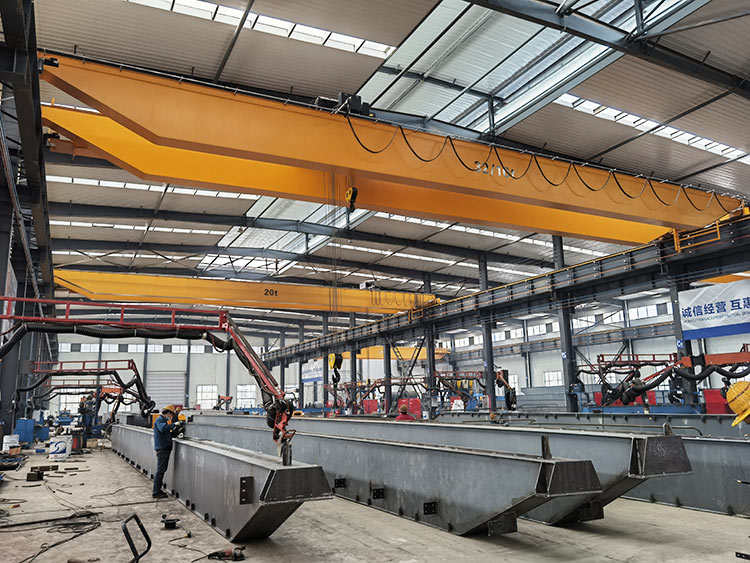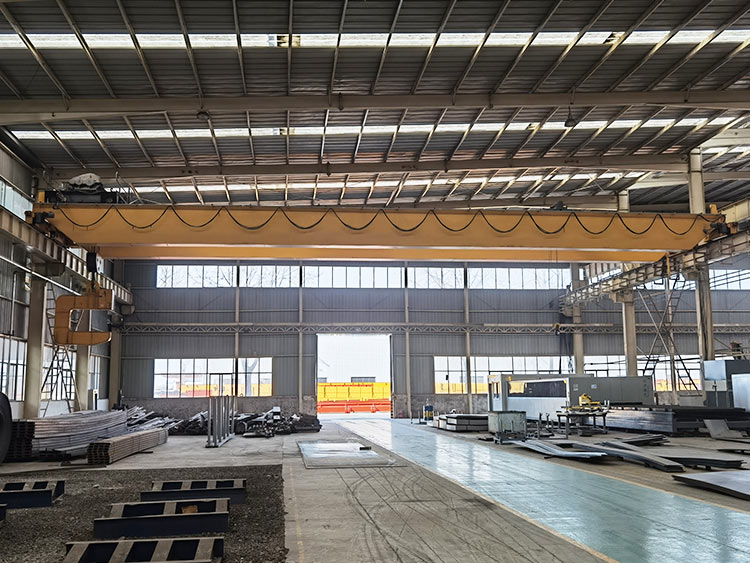Bridge cranes, often referred to as overhead cranes, play a pivotal role in many industries, providing the muscle needed for heavy lifting, material handling, and transporting loads efficiently and safely. From manufacturing plants to warehouses, shipyards to construction sites, bridge cranes are indispensable for streamlining operations. In this article, we will explore the key benefits of using bridge cranes for heavy lifting and provide guidance on how to choose the right crane for your specific needs.

Key Benefits of Using Bridge Cranes for Heavy Lifting
1. Increased Efficiency and Productivity
Bridge cranes can significantly improve the speed and efficiency of material handling processes. By enabling the rapid and precise movement of heavy loads, they help reduce the time required to transport materials from one place to another. This increased efficiency directly translates into higher productivity for your business, as workers can complete more tasks in less time with the aid of the crane. This is particularly beneficial in industries like manufacturing, where maintaining a consistent production flow is critical to meeting deadlines.
2. Enhanced Safety
Handling heavy loads manually or with forklifts can pose serious risks to workers, especially when the loads are large, unevenly shaped, or difficult to maneuver. Bridge cranes provide a safer alternative by reducing the need for manual lifting and minimizing the risk of accidents. Many bridge cranes are equipped with advanced safety features, such as overload protection, emergency stop functions, and anti-sway technology, which help prevent accidents and injuries in the workplace. Additionally, the ability to operate the crane via a remote control ensures that operators can maintain a safe distance from potentially hazardous areas.
3. Versatility in Load Handling
Bridge cranes are highly versatile and can be used to lift and transport a wide variety of loads. Whether it’s raw materials, machinery, or finished products, bridge cranes can handle loads of different sizes, shapes, and weights. Their flexibility makes them suitable for industries ranging from construction and steel manufacturing to shipping and logistics. Additionally, Aicrane bridge cranes can be customized with specialized lifting attachments, such as spreader beams, magnets, or vacuum lifters, to accommodate specific types of loads.
4. Efficient Use of Space
One of the standout features of bridge cranes is their ability to operate overhead, making use of the vertical space in a facility. This frees up valuable floor space that would otherwise be occupied by traditional material handling equipment, such as forklifts or pallet jacks. As a result, businesses can optimize their workspace for other operations, such as storage or additional production lines, while still maintaining the ability to move heavy loads across the facility. The compact and efficient design of bridge cranes is particularly advantageous in facilities with limited floor space.

5. Cost Savings Over Time
While the initial investment in a bridge crane may seem high, the long-term cost savings can be substantial. By improving efficiency and reducing the risk of accidents and equipment damage, bridge cranes can help lower operational costs. Additionally, bridge cranes are durable and require relatively low maintenance compared to other types of heavy lifting equipment, further contributing to cost savings over time. The enhanced lifespan of bridge cranes, along with their ability to perform heavy lifting tasks reliably, makes them a cost-effective choice for many businesses.
6. Improved Load Control and Precision
Bridge cranes offer superior control and precision when lifting and positioning loads. Advanced control systems, such as variable frequency drives (VFDs) and anti-sway mechanisms, allow operators to make smooth and accurate movements, ensuring that loads are lifted and placed exactly where needed. This level of precision is especially important in industries where delicate or expensive materials need to be handled with care, such as in aerospace, automotive, or electronics manufacturing.
7. Reduced Labor Costs
By automating the process of lifting and moving heavy loads, bridge cranes reduce the need for manual labor and multiple workers to perform tasks. This reduction in labor costs can have a significant impact on the overall profitability of a business. Additionally, with fewer workers needed for heavy lifting, businesses can reallocate labor resources to other essential tasks, further enhancing productivity.
How to Choose the Right Bridge Crane for Your Needs
With so many types of bridge cranes available, choosing the right one for your operation can be challenging. Here are several key factors to consider when selecting a bridge crane:
1. Understand Your Lifting Requirements
The first step in choosing the right bridge crane is to understand your specific lifting requirements. This includes the maximum load capacity, the frequency of use, and the size and shape of the loads you’ll be handling. For example, a single-girder bridge crane may be sufficient for lighter loads (up to 15 tons), while a double girder bridge crane is better suited for heavier loads (up to 500 tons). Consider the duty cycle, which refers to how often the crane will be in use, as well as the environment in which the crane will operate.
2. Consider the Span and Height Requirements
The span of the bridge crane is the distance it needs to cover between the two runway beams, while the height refers to the maximum lifting height required. It’s important to measure your facility carefully to ensure that the bridge crane you choose will have enough clearance and can safely lift loads to the necessary height. Additionally, some industries may require cranes with long spans to cover large areas or multiple workstations.
3. Evaluate Control Options
Bridge cranes can be operated in various ways, including pendant controls, radio remote controls, or cab-operated systems. The choice of control system depends on the type of load, the operator’s preference, and the environment in which the crane will be used. Remote controls are ideal for maintaining a safe distance from hazardous areas, while cab-operated systems provide the operator with a close-up view of the load and crane movements.
4. Choose the Right Crane Type
There are different types of bridge cranes available, each suited to different applications. Single-girder bridge cranes are typically used for lighter loads, while double-girder overhead cranes are designed for heavy-duty applications. You may also want to consider whether a top-running or under-running bridge crane is more appropriate for your facility. Top-running cranes offer greater load capacity, while under-running cranes are suitable for lighter loads and areas with limited headroom.
5. Assess Customization Needs
Many industries require custom bridge crane solutions to meet specific operational needs. For example, you may need a crane with specialized lifting attachments, such as a magnetic or vacuum lifter, or one with custom safety features. Work closely with a reputable crane manufacturer or supplier to ensure that the crane can be tailored to your exact specifications.
6. Factor in Maintenance and Serviceability
Consider the long-term maintenance requirements of the bridge crane. Opt for a crane that is easy to service and has readily available spare parts. This will ensure minimal downtime and lower maintenance costs over the lifespan of the crane. Additionally, inquire about after-sales support and service from the crane manufacturer or supplier.
Conclusion
Bridge cranes offer numerous benefits for heavy lifting, including increased efficiency, enhanced safety, and cost savings over time. By carefully considering your lifting requirements, span and height needs, control options, and crane type, you can select the right bridge crane to optimize your operations. Investing in the right bridge crane not only improves productivity but also enhances workplace safety, making it a valuable asset for any business handling heavy loads.